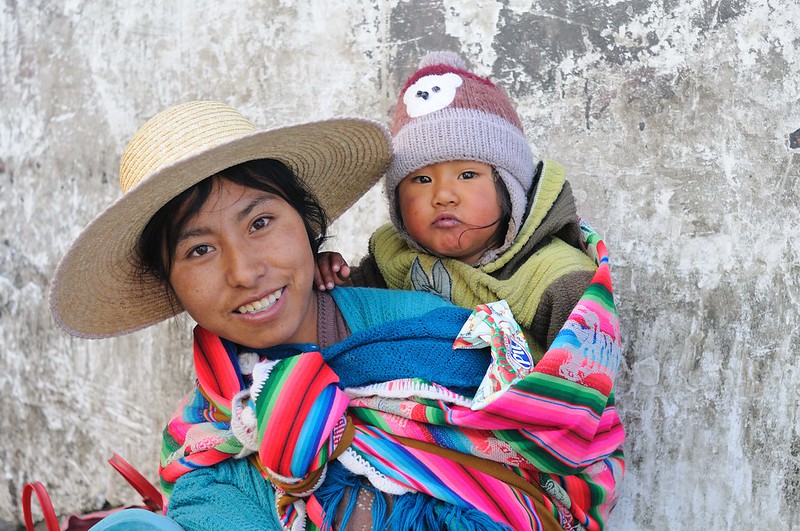How Intercultural Education in Bolivia Can Help Alleviate Poverty
 There are 36 officially recognized Indigenous peoples in Bolivia, and according to a 2021 national survey, 41% of Bolivians over the age of 15 identify as Indigenous. Despite Bolivia establishing relative economic stability since the COVID-19 pandemic, native rural communities are still disproportionately affected by deprivation, with a poverty rate 20% higher than that of urban areas, as well as struggles with underrepresentation and exclusion from services. Cycles of poverty within Indigenous communities can often happen due to educational inequalities since there is not enough access to native language instruction.
There are 36 officially recognized Indigenous peoples in Bolivia, and according to a 2021 national survey, 41% of Bolivians over the age of 15 identify as Indigenous. Despite Bolivia establishing relative economic stability since the COVID-19 pandemic, native rural communities are still disproportionately affected by deprivation, with a poverty rate 20% higher than that of urban areas, as well as struggles with underrepresentation and exclusion from services. Cycles of poverty within Indigenous communities can often happen due to educational inequalities since there is not enough access to native language instruction.
Intercultural education recognizes cultural and linguistic diversity, as well as ensures all learners have the right to communicate in their native language. Thanks to various strategies, legal reforms and programs, the implementation of intercultural education in Bolivia helped improve outcomes, preserve identities and promote inclusion among rural communities.
Bolivia: A Plurinational Nation
Bolivia’s 2009 constitution declared the country a plurinational state and officially recognized 36 Indigenous languages. This signalled a step forward in the decolonization of Bolivia, as the document also guaranteed rights to “autonomy, self-government, their culture and recognition of their institutions” for Indigenous populations. The constitution also emphasises education in Bolivia as universal, intercultural and free in Article 17.
Following the 2009 constitution and its emphasis on education, the government introduced Law 070 in 2010 to promote multilingual, intracultural and intercultural education in Bolivia. This meant that a multilingual model replaced the bilingual model, so English, Spanish and an Indigenous language became part of the national curriculum.
However, the implementation of complete intercultural education in Bolivia poses a network of challenges. Some of these challenges include insufficient time allocated to native languages, a lack of native-speaking teachers and an inadequate understanding of socio-cultural and regional contexts.
Improving Educational Outcomes
In addition to constitutional and legal reforms, various organizations are working to improve opportunities for Indigenous peoples through multilingual and intercultural education in Bolivia. The Programa Amazónico de Educación Intercultural Bilingüe (PAEIB) has been promoting an intercultural bilingual approach to education in the Amazon and lowland region since 2006. PAEIB provides scholarships and supplies materials to primary schools across Indigenous regions, including dictionaries, learning units, songbooks and teaching guides. Not only does this supply of materials ensure that schools have the necessary equipment to teach native languages, but it also adapts and complements the curriculum towards Indigenous cultures.
Similarly, Fe y Alegría Bolivia promotes quality education for excluded populations. Fe y Alegría manages 398 educational centres across Bolivia (including specialised services for children with learning and hearing disabilities), benefiting 173,518 students and employing 9,384 teachers and administrators. The education centres focus on relevant and contextualised learning by adopting a learning model based on the knowledge and practices of rural Indigenous communities, meaning that the curriculum responds to the socio-cultural contexts of its students and helps to preserve their cultural identities.
Preserving Cultural Identities
With around 30 indigenous languages in danger of extinction, Bilingual Nests is preserving the identities of marginalized groups by revitalizing native languages nationwide. The program has been working since 2014 to prevent language extinction and impacted 2,314 children in 2021.
Bilingual Nests targets children under the age of four to maximise acquisition and adapt their approach depending on whether or not a child’s relatives or caregivers are native speakers. If they are, daily communication and instructions using the native language are encouraged, as well as family and community meetups, in order for the child to naturally build a linguistic foundation. If neither a primary caregiver nor a grandparent can oversee language transition, childcare facilities primarily use Indigenous languages during instructions and activities.
During the COVID-19 Pandemic, Bilingual Nests recognized inequalities regarding internet access and remote learning across Indigenous communities in Bolivia and subsequently developed both print and digital materials to continue running the program in rural communities. With the help of funding from UNICEF, Bilingual Nests hopes to continue expanding its strategies into more rural areas where native languages are at risk of extinction.
Funding and prioritization of native languages in the national curriculum are crucial in order for the 2009 Constitution’s promises of intercultural education in Bolivia to materialize.
– Clodagh Dowson
Clodagh is based in Wiltshire, UK and focuses on Global Health and Politics for The Borgen Project.
Photo: Flickr
